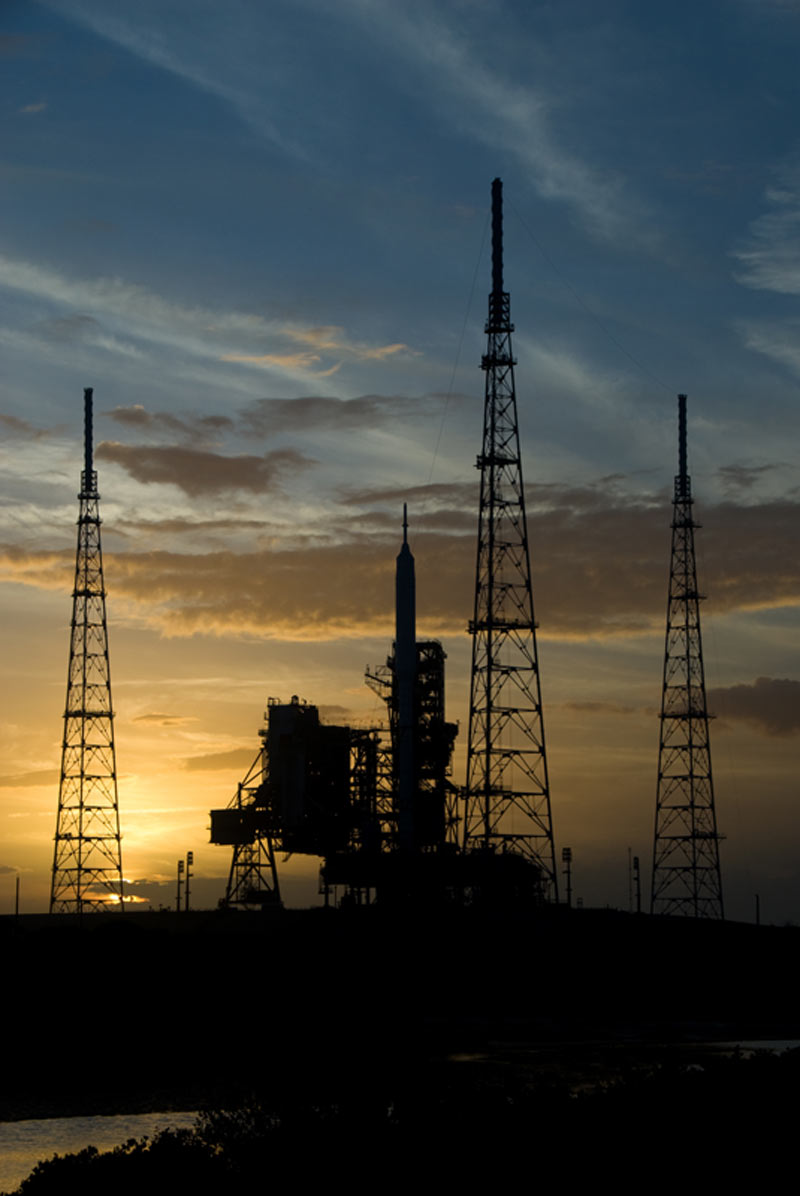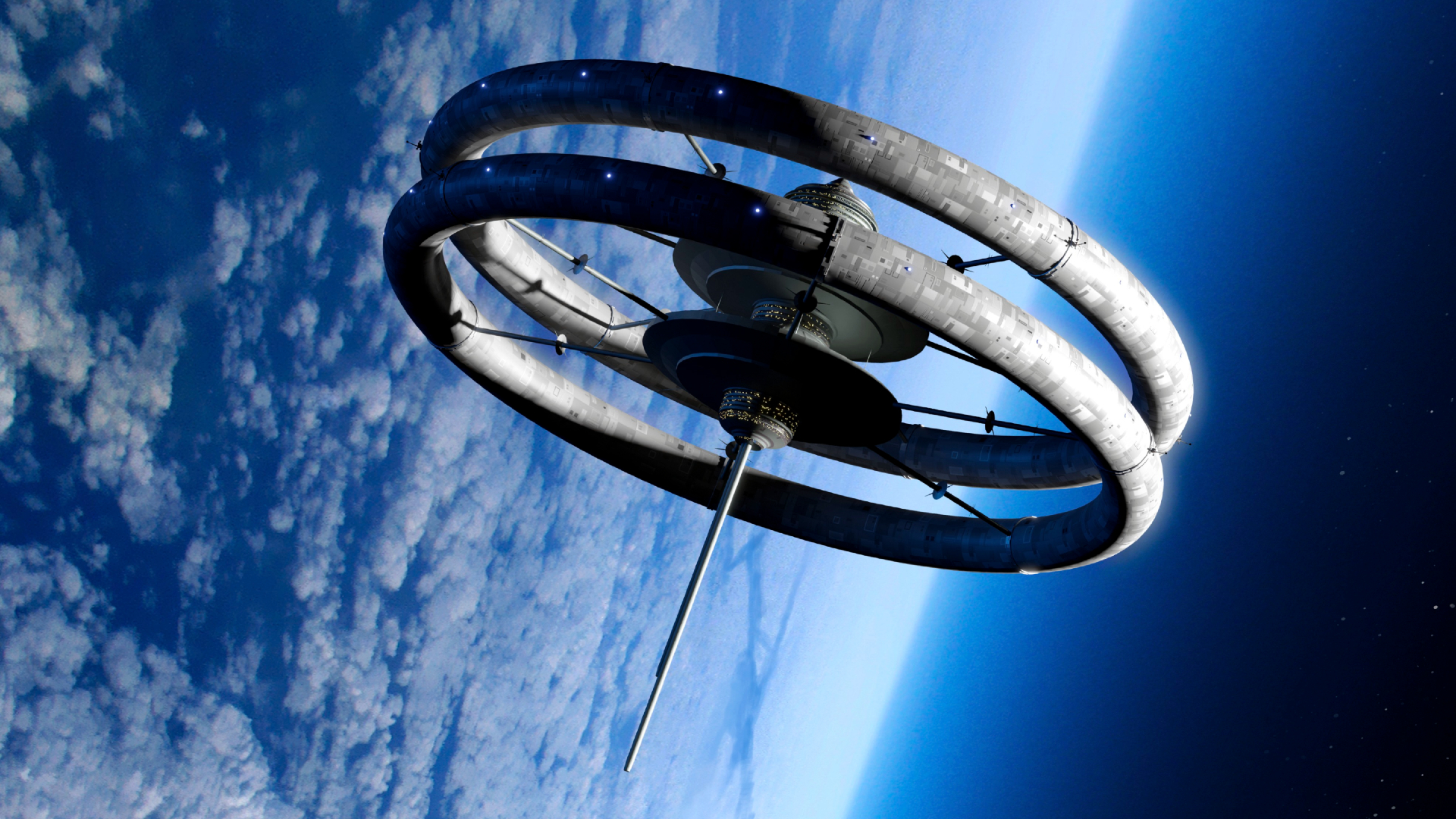Bad Weather May Stall NASA Rocket Test

This story was updated at 11:41 a.m.
CAPE CANAVERAL, Fla. ? Bad weather and a series of unluckyevents have thwarted NASA's plans to launch the prototype Ares I-X rocket on atest flight today.
Launch teams tried repeatedly to lift off the rocket, butclouds, winds and the threat of rain prevented the flight. Launch was oftenfoiled by the "triboelectrification rule" - a law that prevents thevehicle from blasting off into clouds because it could trigger staticelectricity that may interfere with onboard instruments.
"We had some opportunities, we just didn't get there -the weather didn't cooperate," said launch director Ed Mango.
At one point the rocket was poisedto launch to take advantage of a brief window of clear skies, only to be hinderedin the final minutes by an errant boat that had strayed into the danger zonewhich the rocket would flyover after liftoff. After that issue was cleared NASA intended to try againa few minutes later, but a cloud was spotted passing over the launch pad,violating weather concerns.
Before that, a sock that covered a sensor instrument on thetop of the rocket got stalled as crews attempted to pull the cover off. Butthat issue, too, was resolved.
"There was huge applause here in the control room whenit finally broke off and came clear," said Ares I-X deputy mission managerJon Cowart. "Glad they got that turned around and got that fixed. But thatdid delay us."
Breaking space news, the latest updates on rocket launches, skywatching events and more!
Now mission managers are targeting a launch sometime withinthe next hour, and plan to take advantage of any clear skies that arise.
The test rocket was originally slated to lift off thismorning at 8 a.m. EDT (1200 GMT) from LaunchPad 39B here at Kennedy Space Center. NASA had until noon EDT (1600 GMT)today to loft the rocket before its four-hour launch window was up and thelaunch team had to stand down until Wednesday. All the booster needed was about10 minutes of clear skies within that time.
Slightly better weather conditions are expected forWednesday, when weather officer Kathy Winters has predicted a 60 percent chanceof clear skies. That's an improvement over Tuesday's forecast, which held only40 percent odds of favorable weather.
"I feel more optimistic about Wednesday thanTuesday," Winters said over the weekend.
The $445 million Ares I-X is the firsttrial version of NASA's Ares I booster, a next-generation rocket intendedto replace the space shuttle as a vehicle to carry astronauts to low-Earthorbit and, ultimately, on missions to the moon. The test rocket includes a realsolid-rocket first stage, with a dummy second stage and mock Orion crew moduleatop it.
If Ares I-X does not launch this week, NASA may have tostand down until sometime in November due to otherlaunch traffic, including a shuttle mission slated to lift off from anearby launch pad Nov. 16. The 327-foot (100-meter) rocket, currently theworld's tallest booster capable of launching, may have another chance to flyThursday, mission managers have said.
Next-generation spacecraft
The $445 million experimental Ares I-X flight is expected tolast a little over two minutes. The rocket is slated to loft eastward, reachinga maximum altitude of about 150,000 feet, or 28 miles (46 km),before arcing back down into the Atlantic Ocean.
The mission?s purpose is to collect data onthe rocket's design and performance. Cameras on the ground and aboard anairplane will gather visual evidence of the rocket's flight, while over 700sensors onboard will record comprehensive measurements.
As an untested rocket, the mission does come with a higherdegree of risk than the more routine space shuttle missions, managers said.
"There are no guarantees," Ares I-X mission managerBob Ess said on Monday. "We think we're ready to go from a vehicle pointof view. The whole point of tomorrow is to learn from it."
In fact, the novel aspect of the experimental flight isexciting to the rocket scientists.
"This developmental flight test stuff is a lot offun," Mango said.
Future plans
Regardless of the outcome of Ares I-X, the ultimate fate ofAres I remains uncertain. Plans for the rocket, along with the Constellation programunder which it falls, are under review by the Obama administration. Apresidential panel submitteda report last week summarizing NASA's plans and offering a set of optionsfor the future.
The report suggested that NASA abandon Ares I and allowcommercial companies to step in and provide a vehicle capable of transportinghumans to low-Earth orbit. That way, NASA could focus on building spacecraft totake people back to the moon and beyond.
The space agency has been working to ready the Ares I rocketand Orion crew capsules for operation in 2015 with the goal of returning to themoon by 2020. But the recent review found that the new rocket and spacecraftwill likely not be ready until 2017.
Constellation program manager Jeff Hanley said the upcomingflight test would be useful, even if Ares I is never to be built.
"It's certainly incredibly important to the AresI," Hanley said. "It is just as important to any future human launchsystem that you might want to build. And of course it's important in terms ofour overall plan for the Constellation program."
- Video - Ares I-X Rocket Rolls to Launch Pad, Test Flight Plan
- What to Watch For During NASA's Ares I-X Rocket Test
- Video Show - NASA's Vision for Humans in Space
SPACE.com will provide full coverage of NASA's Ares I-Xtest flight with Staff Writer Clara Moskowitz in Cape Canaveral, Fla., andManaging Editor Tariq Malik in New York. Clickhere for live launch coverage and mission coverage.

Clara Moskowitz is a science and space writer who joined the Space.com team in 2008 and served as Assistant Managing Editor from 2011 to 2013. Clara has a bachelor's degree in astronomy and physics from Wesleyan University, and a graduate certificate in science writing from the University of California, Santa Cruz. She covers everything from astronomy to human spaceflight and once aced a NASTAR suborbital spaceflight training program for space missions. Clara is currently Associate Editor of Scientific American. To see her latest project is, follow Clara on Twitter.
